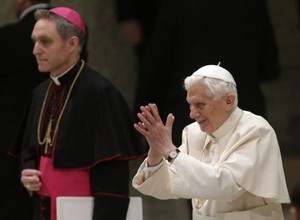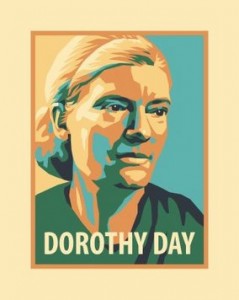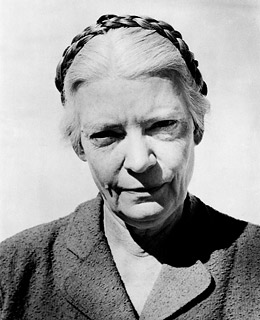I found the following file on my computer this morning by accident –I wasn’t looking for it, but I was happy to find it. I’ve been harping on the Benedictine influence upon Dorothy Day and the importance the Rule of Benedict and the influence various monks had Day. For example, we have a good example of Dom Virgil Michel working with Dorothy Day at the Catholic Worker. Another is Brother Victor-Antoine d’Avila Latourrette. Day’s sainthood cause is being studied at the moment and these things matter, in my opinion.
Virgil Michel, O.S.B., and the Benedictine Influence on the CW Movement:
Virgil Michel, Fellow Worker in Christ
by Dorothy Day
To us at the Catholic Worker, Father Virgil was a dear friend and adviser, bringing to us his tremendous strength and knowledge. He first came to visit us at our beginnings on East Fifteenth Street. He was like Peter Maurin in the friendly simple way he would come in and sit down, starting right in on the thought that was uppermost in his mind, telling us of the work he was engaged in at that particular moment and what he was planning for the future. He was at home with everyone, anywhere. He could sit down at a table in a tenement house kitchen, or under an apple tree at the farm, and talk of St. Thomas and today with whoever was at hand. He had such faith in people, faith in their intelligence and spiritual capacities, that he always gave the very best he had generously and openheartedly.
He was interested in everything we were trying to do, and made us feel, at all the Catholic Worker groups, that we were working with him. When he came in it was as though we had seen him just a few weeks before. He was at home at once, he remembered everybody, he listened to everybody.
Orate Frates, January, 1939
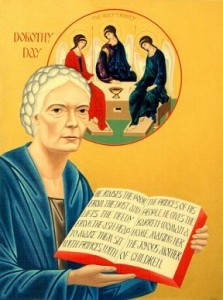
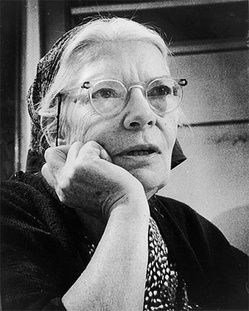
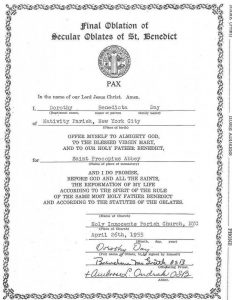 Oblation as a lay woman she was first connected with the Benedictine monks of Portsmouth Abbey before she settled her Oblation to St Procopius Abbey (outside Chicago). However, there is a difference of opinion on where Day’s Oblation was first offered, Portsmouth or Procopius. The historians have done some fact checking, so the matter is closed.
Oblation as a lay woman she was first connected with the Benedictine monks of Portsmouth Abbey before she settled her Oblation to St Procopius Abbey (outside Chicago). However, there is a difference of opinion on where Day’s Oblation was first offered, Portsmouth or Procopius. The historians have done some fact checking, so the matter is closed.